Many states in America are only home to a handful of owl species. However, due to Minnesota’s geographic position in the U.S., it’s able to provide a perfect environment for a number of different owls. While some stay in the state year-round, others pass through during migrations. Let’s discuss 12 owls that can be found in Minnesota and review their preferred regions and habitats.
1. Great Horned Owl
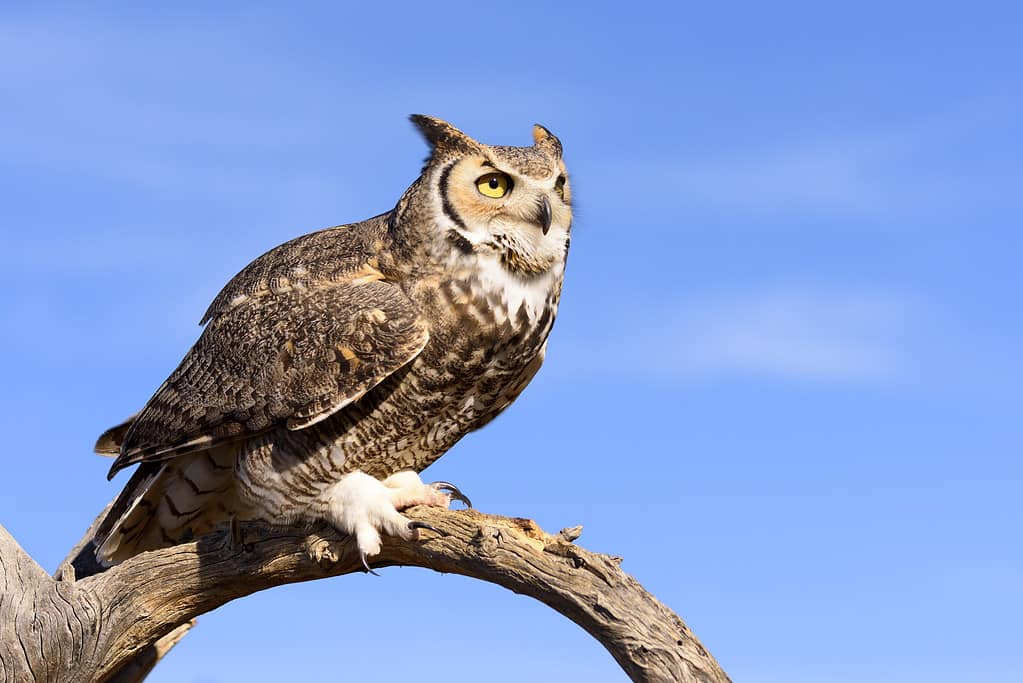
Great horned owls are formidable predators.
©kojihirano/iStock via Getty Images
Among all owls in Minnesota, the great horned owl is one of the most iconic. This owl is easily identified by the large tufts of feathers on their head, their study body, and their confident hunting and flying. In addition, the great horned owl lives in a variety of habitats. They can be found in forests, farmland, urban areas, and grasslands. This gives bird watchers a wealth of opportunities to catch a glimpse of one.
2. Barn Owl

Rapid urbanization has hurt barn owl populations.
©Imogen Warren/Shutterstock.com
Barn owls prefer to live on farmland. Before our recent rapid urbanization, they were actually taken care of by farmers for the purpose of pest control. Since then, this symbiotic relationship has developed. Although there aren’t nearly as many farms as there used to be, these areas will give you the highest likelihood of seeing them. Try visiting rural areas in the southern portion of Minnesota.
3. Snowy Owl
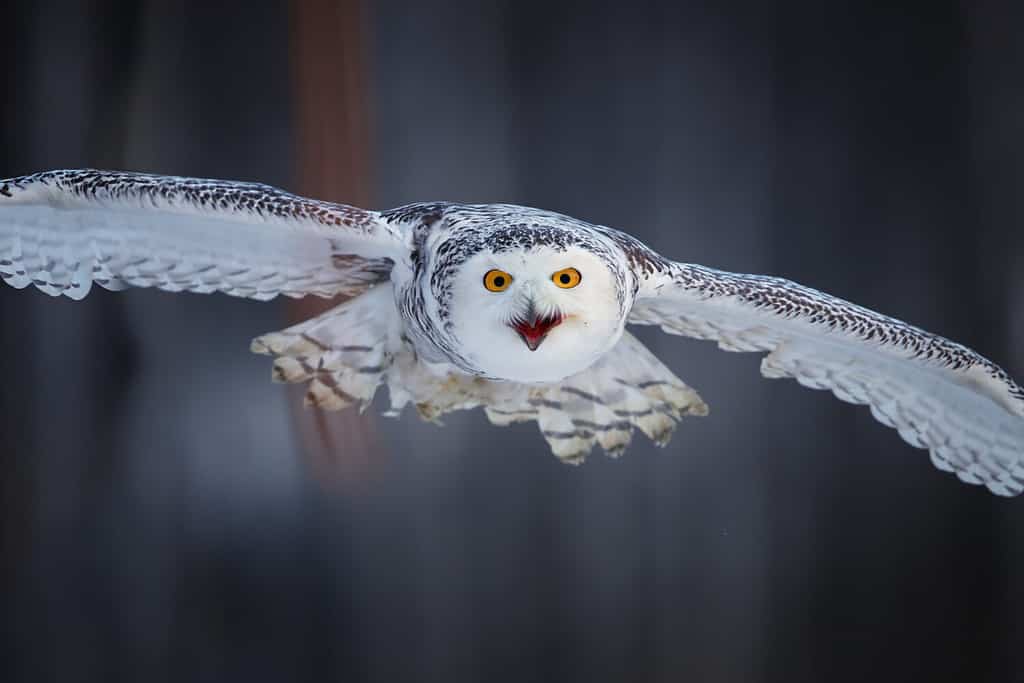
The snow owl prefers to stay up north during the majority of the year.
©Martin Mecnarowski/Shutterstock.com
Snowy owls can be a rare sight in Minnesota, which is quite a shame because they’re so breathtaking. According to the Minnesota Department of Natural Resources, “From about early November through late March, look for snowy owls in large, open areas, especially with short grasses, which more or less resemble the tundra where they breed in summer. Farm fields and airports are good places to look.”
4. Eastern Screech Owl
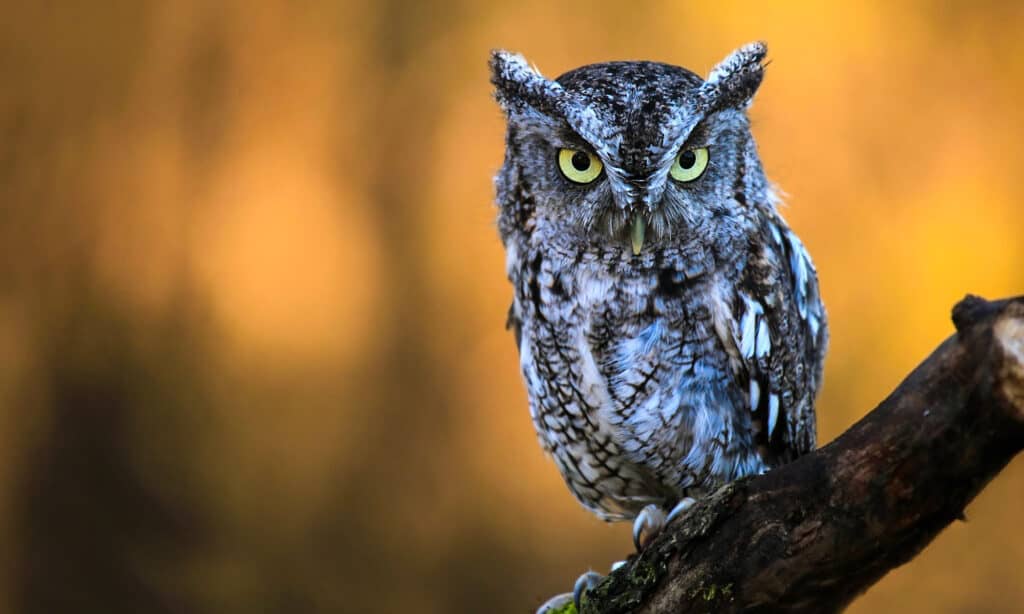
Eastern screech owls are nocturnal hunters.
©mlorenz/Shutterstock.com
Luckily, eastern screech owls are one of the more common species in Minnesota. They enjoy living in forests, on farmland, near bodies of water, and in open fields. On occasion, they can even be found in urban areas. Although this owl is nocturnal, their distinctive call can alert bird watchers that one is nearby. Winter is a good time to begin looking for the eastern screech owl as fewer food sources may motivate them to hunt outside their normal nighttime hours.
5. Barred Owl

Barred owls live for roughly 10 years in the wild. If raised in captivity, they can reach up to 20 years of age.
©FotoRequest/Shutterstock.com
Unlike other places in the United States, the population of barred owls in Minnesota is somewhat stable. In terms of appearance, barred owls are somewhat similar to great-horned owls. They have sturdy, medium-sized bodies and brownish-grey plumage. However, in contrast to the great horned owl’s bright yellow eyes, the eyes of a barred owl are deep and dark. They prefer to live in forests close to small bodies of water such as rivers, swamps, or lakes.
6. Burrowing Owl
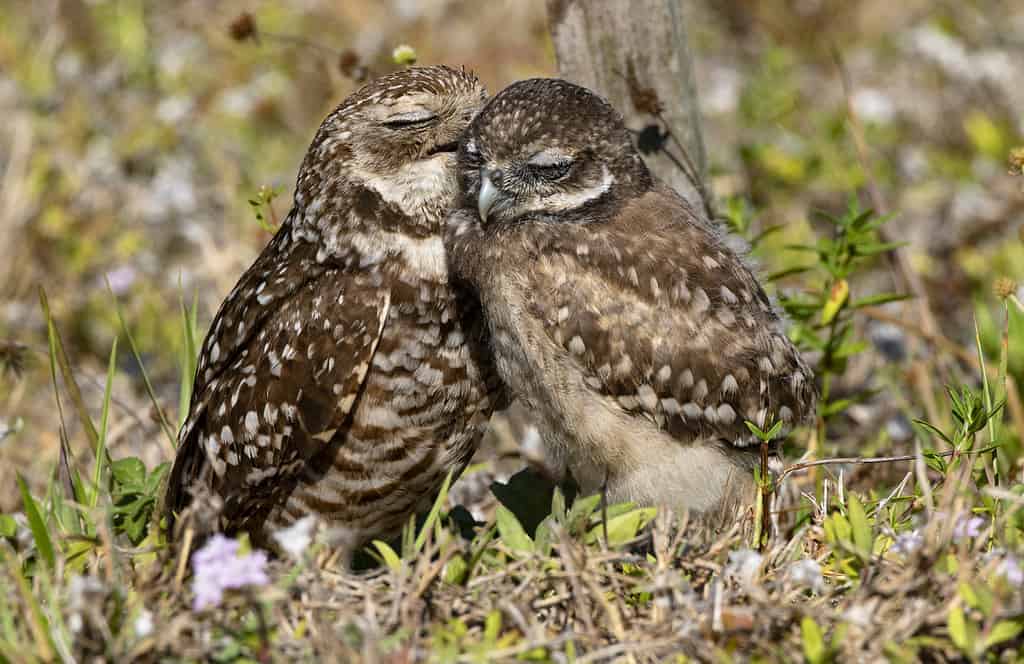
Burrowing owls mate for life.
©Florence and Joseph McGinn/iStock via Getty Images
Although burrowing owls have been spotted in the state of Minnesota before, their populations have been steadily declining for decades. Seeing one in this state is not necessarily impossible, but likely incredibly challenging. Despite this, burrowing owls are diurnal during their breeding season, meaning that their hours of peak activity occur during the day. This is a great time of year to try spotting one as the increased visibility will give bird watchers more opportunities to see one in the wild.
7. Northern Saw-Whet Owl
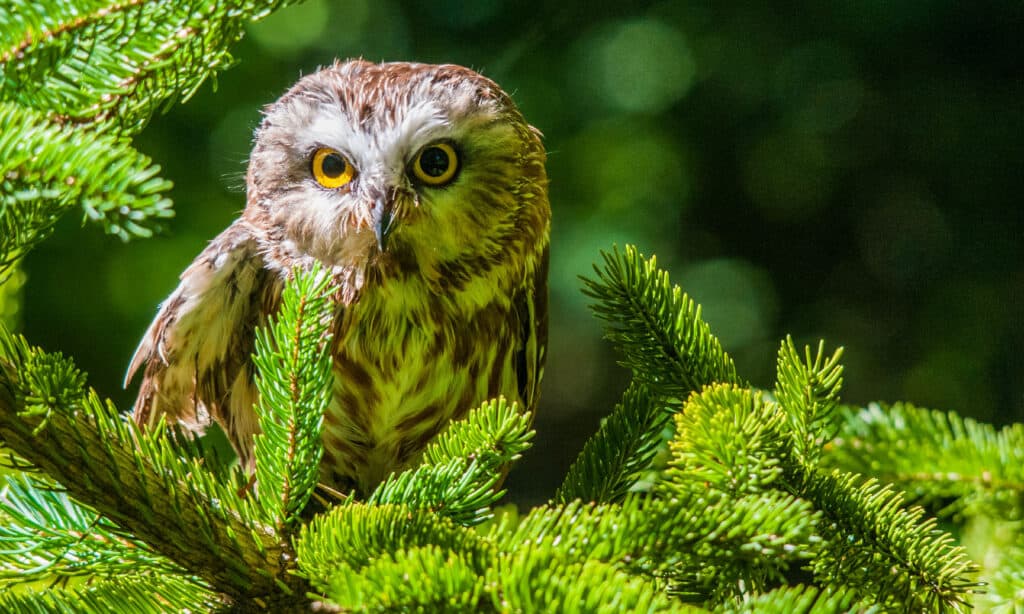
Northern saw-whet owls have sharp senses.
©iStock.com/bookguy
The adorable northern saw-whet owl is one of the tiniest species of all. They stand about 8 inches tall and only weigh about four ounces. Because of this, they are predated by a variety of other animals, such as the great horned owl. Despite their small size, the northern saw-whet owl is well distributed across northern Minnesota. They enjoy taking up residence in forested areas and swamps.
8. Short-Eared Owl
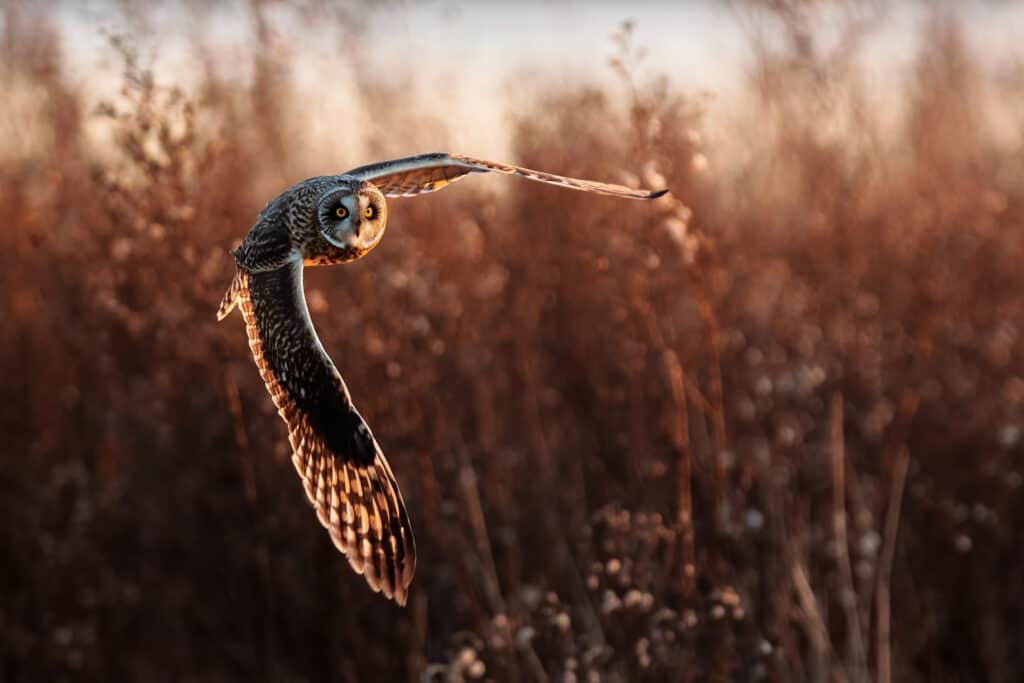
Short-eared owls are relatively social.
©RobDemPhoto/Shutterstock.com
At one point, the short-eared owl was abundant throughout the state of Minnesota. However, their numbers are currently in decline due to the rapid loss of habitat. Despite this, short-eared owls are still present in Minnesota, and sightings are still reported every so often. They prefer grasslands over any other habitat, typically by small bodies of water such as lakes or marshes. These owls seem to favor the northwestern portion of the state. According to the Minnesota Department of Natural Resources, Aspen Parklands, Agassiz Lowlands and Tamarack Lowlands are some of the areas with the highest density of short-eared owls.
9. Long-Eared Owl

Long-eared owls have distinctive tufts of fur atop their head that resemble ears.
©Romuald Cisakowski/Shutterstock.com
Although the long-eared owl is a species entirely its own, many inexperienced bird watchers may get them confused with great horned owls. Long-eared owls are slimmer, their ear tufts are typically shorter, and their numbers are much smaller. Seeing one is certainly possible, but less so than their look alike. In addition, their habitats aren’t as varied as other owls, and they prefer to live in forests. Sightings are more common during the winter and throughout their breeding season, which takes place during March and April.
10. Boreal Owl
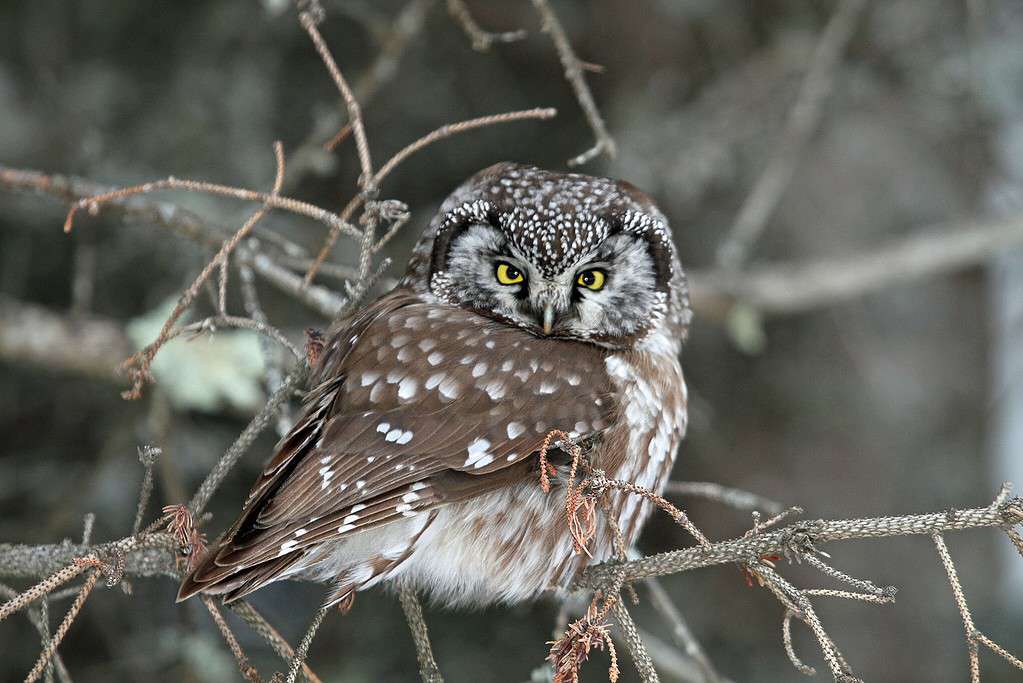
The boreal owl is often predated by other owls.
©Greg Schechter / CC BY 2.0 – License
Boreal owl populations are limited in the state of Minnesota, and sightings primarily occur in the northeastern region of the state. Similar to the northern saw-whet owl, they are smaller in size, and because of this, they are predated more frequently than other owl species. Seeing one is very uncommon, so consider yourself lucky if you happen to come across a boreal owl.
11. Great Gray Owl

The great gray owl is one of the largest owls in the world.
©Lynn_Bystrom/iStock via Getty Images
The great gray owl is one of the most impressive birds native to the state of Minnesota. This species boasts an impressive 4-foot wingspan, and although young great gray owls may be vulnerable to predation, adults seldom are. This species prefers to stay in the northern parts of the state, choosing to nest in forests near lakes and bogs. Their numbers are somewhat limited, and seeing one in person may be challenging. Despite this, its large size, distinctive call, and daytime hunting give bird watchers an advantage in spotting this beautiful animal.
12. Northern Hawk Owl
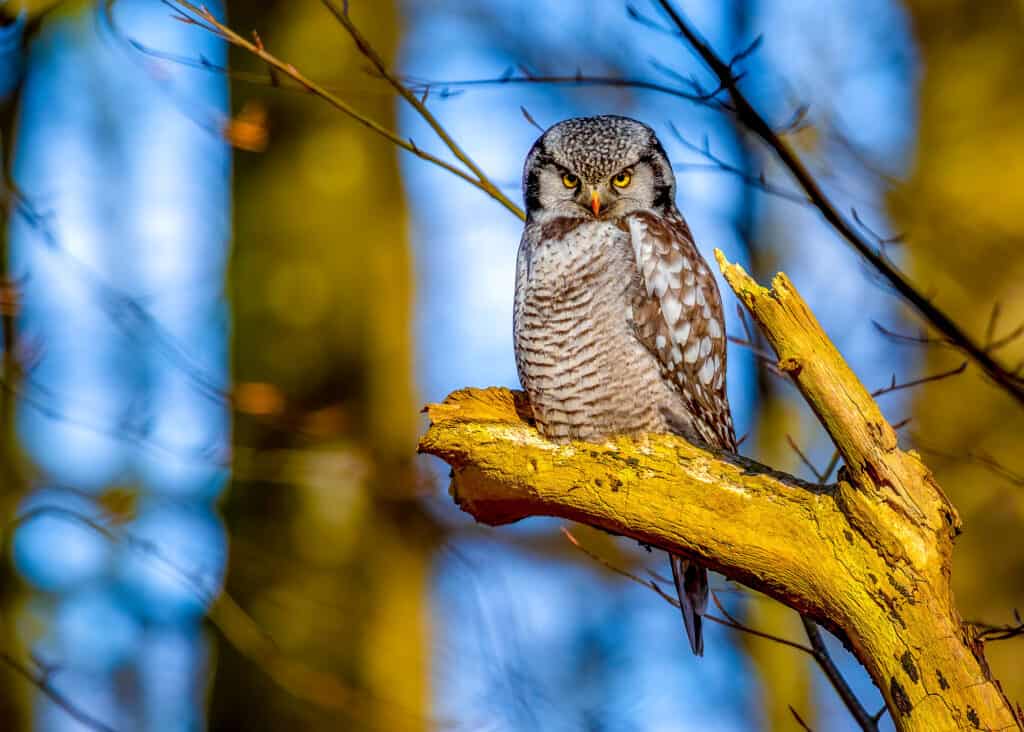
Northern hawk owls eat rodents, small birds, insects, and even squirrels.
©Svitlana Tkach/Shutterstock.com
There’s no denying that the northern hawk owl looks intimidating. These creatures are formidable hunters who prefer to capture their prey during the day. During the winter, when food sources are difficult to find, the northern hawk owl travels south in order to meet their nutritional needs. Sometimes, this means they’ll visit Minnesota, although they typically remain in the northernmost part of the state. These owls prefer to reside in sparsely forested areas near bodies of water.
| Owl | Difficulty of Spotting |
|---|---|
| Great horned owl, eastern screech owl, northern saw-whet owl | Relatively easy |
| Short-eared owl, long-eared owl, barn owl, barred owl, burrowing owl | Somewhat difficult |
| Snowy owl, boreal owl, great gray owl, northern hawk owl | Challenging |
The photo featured at the top of this post is © kojihirano/iStock via Getty Images
Thank you for reading! Have some feedback for us? Contact the AZ Animals editorial team.







